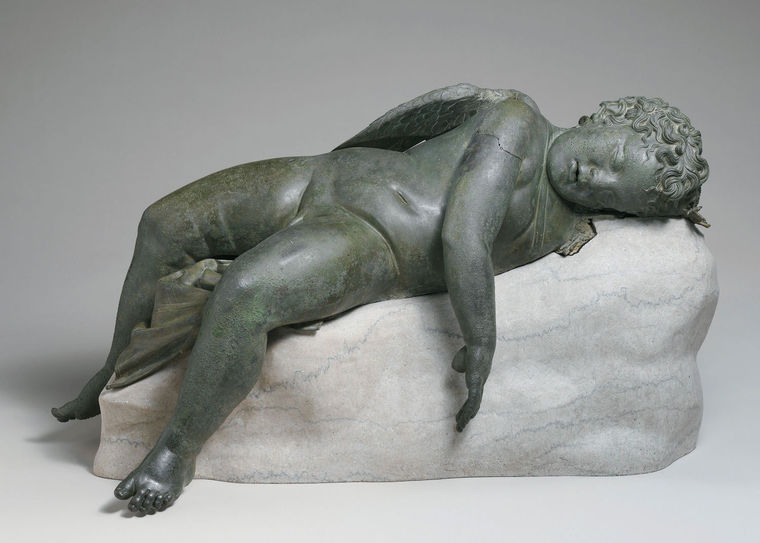I had a medieval history teacher in high school who began our first class by framing what he said was the mindset of medieval history.
These were people, he said, who looked upon the ruins of the Roman Empire around them with awe. They saw the long-destroyed viaducts, the once-luxuriant baths, the stunningly beautiful statuary of gods and men they did not know. And they had no idea how people just like them could have produced it.
In the centuries after Rome’s fall, a return to Roman heights of philosophy, science and art dominated the dreams of each conqueror and fantasies of each immortal bard.
To say that medieval art built toward the Renaissance was a desperate attempt to recapture Rome’s ability to portray humanity and the human form is a bit hyperbolic, but not totally out of line.
When that point was finally reached, art exploded, driving the movements and countermovements that propel visual expression to this day.
But what about before that? Who were the Romans emulating? In our modern notion of lumping Greece and Rome together indiscriminately (for instance: “Greco-Roman,” the “Classics,” using “Parthenon” and “Pantheon” interchangably), it can be easy to forget that a formative few centuries separated the two cultures, along with the Ionian Sea.
An immense new exhibition that opened Sunday at the National Gallery of Art shines a light on the Hellenistic period (that between the death of Alexander the Great, king of Greek kingdom Macedon, and the coronation of first Roman Emperor Augustus) and presents an era that helped form our idea of humankind and established a visual axiom that artists follow to this day.
After Alexander the Great’s death, his Hellenistic generals established their own smaller kingdoms across southeastern Europe. Beginning in Greece and spreading throughout this area, a new style of Hellenistic sculpture came about that prided itself on naturalism.
Notably, the style abandoned the Greek ideal of heroic emotionlessness and perfection for realistic sculptures of sometimes-flawed humans that present a strong sense of feeling.
This attempt to portray humanity through its faults (though there are plenty of heroic, chiseled bodies in the NGA show) was revolutionary and gives the exhibition — “Power and Pathos: Bronze Sculpture of the Hellenistic World” — part of its title, exploring the empathic pity imbued in these effigies.
It’s a welcome reminder that “brazen,” the adjective for unabashed, bold progression, arrives squarely through the word bronze.
The style became immensely popular, and its sculptures were bought up or emulated by wealthy Romans near the end of the Republic in an attempt to appear educated and cultured. As the Roman Empire began just before the birth of Jesus, the Hellenistic age came to an end as the indefatigable time of Rome got started.
The sculptures have a unique patina, as if discarded among olive groves and great, stone temples. Their haunting beauty recalls that quality that mystified the medieval, here anew to bewilder gallery-goers in the best possible sense.
They have gone ghostly green with age, many with empty metallic eyes that stirringly bespeak the great artistic minds that forged them, fading fast into the long ago. A few uninhabited stone bases whose statues have been lost to history stand like Ozymandias’ pedestal in the great Percy Bysshe Shelley poem: “Look upon their works, ye mighty, and despair!”
The sculptures show a sense of righteous solemnity, some broken by the frenzy of athletics, others by the titular pathos of human flaw, and still others by the cordial undertone of quiet homoeroticism.
Certain sculptural effects — eyeballs crafted from inset marble; mustaches, beards and eyebrows etched into the metal; even stubbly pores and meticulously sculpted eyelashes — showcase great and powerful craftsmanship which would too long be forgotten.
“The Orator” (as one work can be called) is a master class in philosophy without reading a single word. He is a tour-de-force of learning from his outstretched, steady hand to the inlaid red copper stripe on his toga (recalling the Classical even as the sculpture is inscribed in Etruscan).
The presence of regular people — an athlete, an artisan, a balding aristocrat — not heroized but portrayed as they were, often at or under life-size, abandons that Classicism for something truly Hellenistic. Expressions not solemn, per se, but real, clothing draped over rippling musculature with luscious undulation that won’t be equaled post-Rome until the Renaissance — it all builds to a style.
It is meticulous, down to a single curl of hair — on the head or elsewhere — to an eyelash, to a rib. In these great old works is a quality of technique the world had never known before and would desperately yet unsuccessfully try to regain through the Dark Ages.
Roman collectors coveted these Hellenistic works and displayed them artistically and functionally. An Apollo from Pompeii once used nearby tendrils to hold a tray; the Idolino in the gallery’s last room was likely a lamp holder, according to the exhibition audio tour.
In fact, the “Idolino,” which portrays a young adolescent boy and was given that name after the fact by Italian admirers, typifies the exhibition as it stands centered in the final gallery.
He is an adolescent on the cusp of manhood. Post-Alexander, this new Hellenism grew up wildly. As Augustus was crowned in 27 B.C., Europe stood on a similar cusp: that of the greatest Western empire the world would ever know.
What a beautiful way to show us how – artistically, at least – they got there.
“Power and Pathos: Bronze Sculpture of the Hellenistic World” runs through March 20 and was organized by the NGA, the J. Paul Getty Museum in Los Angeles and the Palazzo Strozzi in Florence, Italy.



